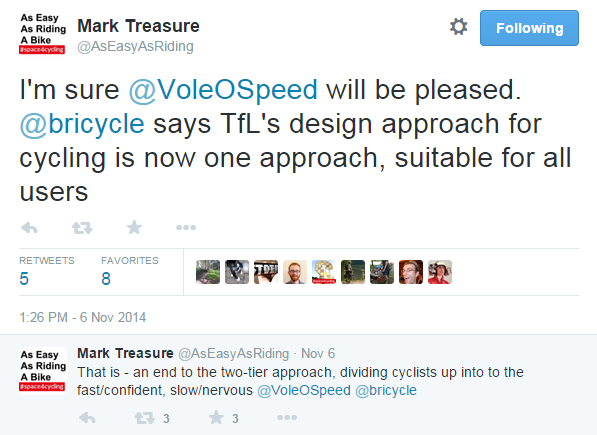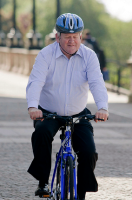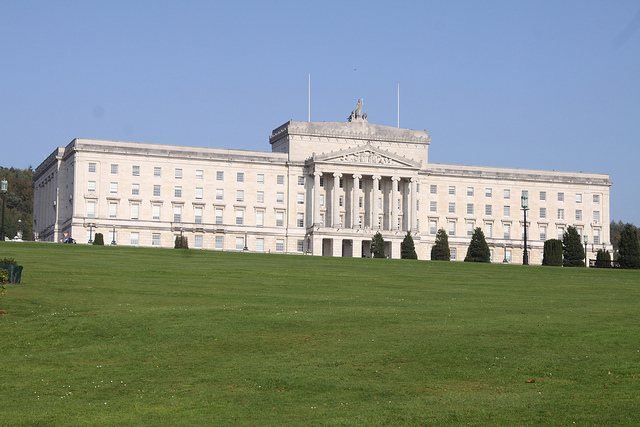
As the UK is due to leave the European Union in March 2019, the future shape of agricultural support is being considered by the Department for Agriculture, Environmental and Rural Affairs (DAERA). Northern Ireland Greenways believes that any revised agricultural payments framework should encourage greenway development under access to the countryside aims and the greening of land opportunities.
The single biggest barrier to greenway development in Northern Ireland is land access. When our extensive railway network was closed and lifted in the mid 20th century, most of the land was sold or taken into private ownership. Subsequent development or agricultural use makes certain sections unlikely to be considered for greenway use as things stand. A range of options will need to be explored over the next quarter of a century between landowners and government to realise the 1,000km vision for a world-leading greenway network.
“A network of green corridors will contribute to delivering these benefits whilst building attractive environments and vibrant communities around the centres where we live and work. Greenways can make a huge difference to the daily lives of people by providing the opportunity to enjoy safe and easy access to fresh air and exercise, encouraging more people to commute to work by foot or bicycle, more children to walk or cycle to school, and provide a vital leisure resource for local people and visitors alike.”
Exercise Explore Enjoy: A Strategic Plan for Greenways, DfI
The land access negotiation process can be difficult, as has been seen in route development in parts of the UK and Ireland. Landowners and farmers can see potential greenway paths as problematic, with worries over routes slicing up land holdings, affecting productive potential, and fears of compulsory purchase meaning decisions being imposed upon them.
In Northern Ireland discussions are not that far advanced in most cases, and the Department for Infrastructure (DfI) has so far insisted on a system of landowner, neighbour and public consultation as part of early route exploration by local councils.

The implications of Brexit on the future of agricultural payments creates an opportunity to reframe the debate on greenways and public access to the countryside.
Some of the criticisms of the current Common Agricultural Policy (CAP) payment system include it being too narrowly focused on certain agricultural uses of land, even if it’s not particularly productive or sustainable. Revising the subsidy framework to include the concept of ‘public money for public goods’ can prompt new uses of land to benefit the wider public.
“Active promotion of access to countryside, educational farm visits and biodiverse green space and ensuring the access is healthy, for example ensuring opportunities for beautiful and tranquil experiences, wildlife encounters and physical activity.”
Public health is a public good and should be supported in farming policy, Vicki Hird
This can start with creating a system of payments which reward the creation of new public pathways across private land. This would recognise the need for partnership working between landowners, the local community, councils and government to identify strategic route objectives, standards of design and ongoing operation.
This can not only support the routes identified through the Strategic Plan for Greenways but also be a spur to local communities working to seek new opportunities for active travel infrastructure in their area. Future payments for any greenways created would need to be dependent on the continued access to, and maintenance of, those routes.
There is an industrial heritage aspect of greenway development which can also be recognised in this type of payment framework. Landowners with remnants of our railway past – station platforms and buildings, bridges, tunnels, viaducts and so on – can be rewarded for the conservation and possible regeneration of certain features, protecting and preserving them for future generations.

Another way in which greenway development can benefit from a new approach to agricultural payments is in the repurposing of land away from arable and pastoral use to greening such as wild meadows and forestry. Concerns about greenway routes which may divide portions of land could be used as opportunities for landowners to create pockets of woodland, or wild areas which would give a much needed boost to biodiversity and wildlife habitats – and have that work reflected in support payments.
Access to the countryside isn’t just about linear pathways for walking and cycling, but also the quality of engagement with nature and agriculture. Again the future subsidy system should reflect ways in which the public are encouraged to visit and interact with the countryside, such as the creation of open farms, educational opportunities, cafes and visitor experiences, accommodation and outdoor activities. Greenways should be seen as key active travel corridors to enable the public to access these potential activities – and the local employment they will support – creating a beneficial feedback loop to society.
A framework of agricultural payments which recognises greenway development as a key aim of society over the next quarter century, and can reward landowners for work to realise this vision, isn’t a magic wand to wipe away the difficulties and concerns which greenway development can sometimes bring. But it could be an important incentive to work together to create special places and a dense web of easy access to our wonderful countryside, which can draw in visitors from far and wide, and benefit all.
Get involved by emailing your response to the DAERA consultation at NIFutureAgriPolicy@daera-ni.gov.uk by Wednesday 10 October 2018.
You can also use a pro-forma response email (and adapt the text as you need to) on the Nature Matters website.
Read more
DAERA: Northern Ireland Future Agricultural Policy Framework
DAERA: NI Future Agricultural Policy Framework – Stakeholder Engagement (PDF, 990K)
Cycling UK: Agricultural subsidies and why countryside access is a public good
The Programme for Government outcomes which agricultural payment support for access to the countryside, greenways and re-greening can help to deliver:
Indicator 6: Improve mental health
Lead measure: % of population with GHQ12 scores ≥4 (signifying possible mental health problem)
Indicator 23: Improve transport connections for people, goods and services
Lead measure: Average journey time on key economic corridors
Indicator 25: Increase the use of public transport and active travel
Lead measure: % of all journeys which are made by walking/cycling/public transport
Indicator 27: Improve cultural participation
Lead measure: % engaging with arts/cultural activities in the past year
Indicator 29: Increase environmental sustainability
Lead measure: Greenhouse Gas Emissions
Indicator 30: Improve our attractiveness as a destination
Lead measure: Total spend by external visitors
Indicator 31: Increase shared space
Lead measure: % who think leisure centres, parks, libraries and shopping centres in their areas are ‘shared and open’ to both Protestants and Catholics
Indicator 34: Improve the regional balance of economic prosperity through increased employment
Lead measure: Employment rate by geographic area (areas to be defined)
Indicator 37: Improve air quality
Lead measure: Nitrogen dioxide concentration.
Indicator 40: Improve our international reputation
Lead measure: National Brand Index
Indicator 42: Increase quality of life for people with disabilities
Lead measure: Average life satisfaction score of people with disabilities
















 Gordon Seabright is the Chief Executive of the Cyclists’ Touring Club (CTC), the national cycling charity. CTC is an independent charity, with 70,000 members nationally. Gordon took up post in March 2012. He will be giving an overview of the Westminster All Party Parliamentary Cycling Group’s cycling inquiry, getting the fundamentals right and the economic benefits of cycling.
Gordon Seabright is the Chief Executive of the Cyclists’ Touring Club (CTC), the national cycling charity. CTC is an independent charity, with 70,000 members nationally. Gordon took up post in March 2012. He will be giving an overview of the Westminster All Party Parliamentary Cycling Group’s cycling inquiry, getting the fundamentals right and the economic benefits of cycling. Lilli Matson is Transport for London’s (TfL’s) Head of Delivery Planning. She leads TfL’s strategy and planning of surface transport priorities and projects – with a focus on managing freight and transport demand, planning for bus priority across London, promoting walking, cycling, accessible public transport and improving road safety. She will give insights into implementing active travel on crowded roadspace and the political leadership needed.
Lilli Matson is Transport for London’s (TfL’s) Head of Delivery Planning. She leads TfL’s strategy and planning of surface transport priorities and projects – with a focus on managing freight and transport demand, planning for bus priority across London, promoting walking, cycling, accessible public transport and improving road safety. She will give insights into implementing active travel on crowded roadspace and the political leadership needed.
![Whoever99 at en.wikipedia [CC-BY-SA-3.0 (http://creativecommons.org/licenses/by-sa/3.0) or GFDL (http://www.gnu.org/copyleft/fdl.html)], from Wikimedia Commons Whoever99 at en.wikipedia [CC-BY-SA-3.0 (http://creativecommons.org/licenses/by-sa/3.0) or GFDL (http://www.gnu.org/copyleft/fdl.html)], from Wikimedia Commons](http://nigreenways.com/wp-content/uploads/2013/05/belfastpano.jpg)


![Original ward map by Rathgarrr (Own work) [CC-BY-SA-3.0 (http://creativecommons.org/licenses/by-sa/3.0)], via Wikimedia Commons JobsMDMBelfastWards6](http://nigreenways.com/wp-content/uploads/2013/01/jobsmdmbelfastwards61.png)

![Original ward map by Rathgarrr (Own work) [CC-BY-SA-3.0 (http://creativecommons.org/licenses/by-sa/3.0)], via Wikimedia Commons WalkingPublicTransportBelfastWard5](http://nigreenways.com/wp-content/uploads/2013/01/walkingpublictransportbelfastward51.png)
![Original ward map by Rathgarrr (Own work) [CC-BY-SA-3.0 (http://creativecommons.org/licenses/by-sa/3.0)], via Wikimedia Commons SustainableCyclingBelfastWard5](http://nigreenways.com/wp-content/uploads/2013/01/sustainablecyclingbelfastward51.png)

![Original ward map by Rathgarrr (Own work) [CC-BY-SA-3.0 (http://creativecommons.org/licenses/by-sa/3.0)], via Wikimedia Commons CentreJourneyCarHousehold5](http://nigreenways.com/wp-content/uploads/2013/01/centrejourneycarhousehold51.png)
 There are certain structural issues which influence main mode of transport choices in Belfast. The last map shows a close correlation between areas of high deprivation and lower percentages of household car ownership, and the opposite true of areas of lower deprivation. But the concentration of cycle commuting also closely matches areas of higher car ownership, so perhaps the assertion that bikes are luxury items in Belfast may hold some truth at present.
There are certain structural issues which influence main mode of transport choices in Belfast. The last map shows a close correlation between areas of high deprivation and lower percentages of household car ownership, and the opposite true of areas of lower deprivation. But the concentration of cycle commuting also closely matches areas of higher car ownership, so perhaps the assertion that bikes are luxury items in Belfast may hold some truth at present.![Original ward map by Rathgarrr (Own work) [CC-BY-SA-3.0 (http://creativecommons.org/licenses/by-sa/3.0)], via Wikimedia Commons CyclingDecadeChangeBelfast](http://nigreenways.com/wp-content/uploads/2013/01/cyclingdecadechangebelfast.png) There is also some evidence that the 60% increase in commuter cyclists has been partly due to uptake in areas of higher deprivation, albeit from a low starting base in many instances. This is encouraging and needs to be built upon. One of the upcoming cycling projects in the city is the roll out of a council-led bike hire scheme. While this is more evidence of a growing awareness of cycling as a key urban transport mode,
There is also some evidence that the 60% increase in commuter cyclists has been partly due to uptake in areas of higher deprivation, albeit from a low starting base in many instances. This is encouraging and needs to be built upon. One of the upcoming cycling projects in the city is the roll out of a council-led bike hire scheme. While this is more evidence of a growing awareness of cycling as a key urban transport mode,








